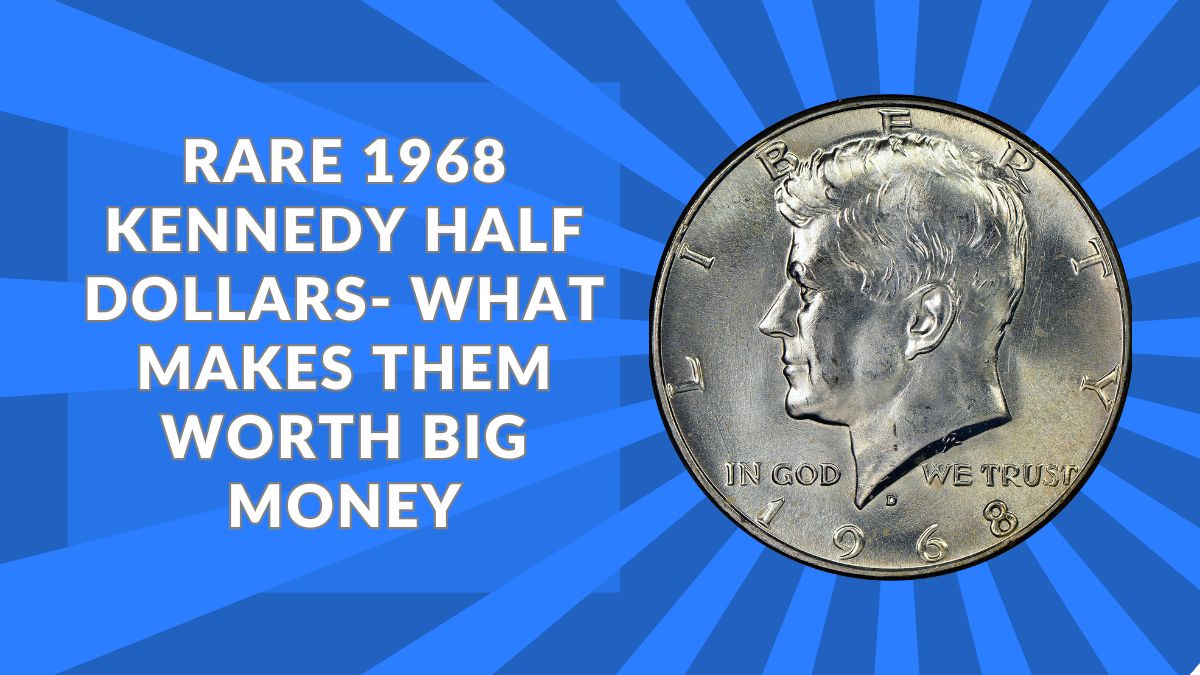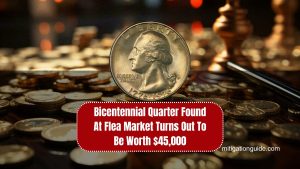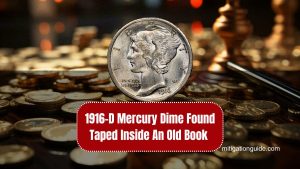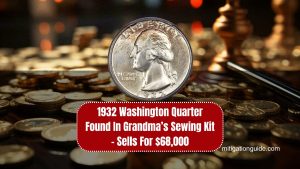The 1968 Kennedy Half Dollar holds a special place in numismatic circles, not only for its historical significance but also for its potential value to collectors.
While many of these coins are common, certain rare varieties and errors can fetch impressive sums. This article delves into what makes these coins valuable, highlighting key factors and notable examples.
Historical Context of the 1968 Kennedy Half Dollar
Introduced in 1964 to honor President John F. Kennedy, the half-dollar quickly became a cherished piece among Americans.
By 1968, the coin’s composition had shifted to 40% silver due to rising silver prices and hoarding tendencies. The 1968-D Kennedy Half Dollar was minted exclusively at the Denver Mint, as indicated by the “D” mint mark.
Key Factors Influencing Value
Several elements contribute to the value of a 1968 Kennedy Half Dollar:
- Condition (Grade): Coins in superior condition, especially those graded MS65 and above, are more valuable.
- Mint Errors and Varieties: Unique errors or variations can significantly increase a coin’s worth.
- Silver Content: With 40% silver composition, the intrinsic metal value sets a baseline for the coin’s worth.
- Demand and Rarity: Limited availability and high collector interest can drive up prices.
Notable Mint Errors and Varieties
Certain mint errors and varieties make some 1968 Kennedy Half Dollars particularly valuable:
- Triple Clip and Partial Collar Errors: These occur when the coin blank has multiple clipped areas and issues with the collar during striking, leading to unique shapes and designs. Such coins have been known to sell for around $140 in MS61 grade.
- Die Adjustment Strikes with Obverse Wheel Marks: Resulting from incorrect pressure calibration during minting, these errors can create coins with incomplete designs. Combined with wheel marks, they can fetch approximately $100.
- Inverted “S” Mint Mark on Proof Coins: In 1968, some proof coins from the San Francisco Mint featured an inverted “S” mint mark due to manual punching errors. Collectors prize these for their rarity.
- Doubled Die Obverse (DDO): This error manifests as slight doubling in inscriptions like “WE TRUST” or “LIBERTY” on the coin’s obverse, adding to its collectibility.
Valuation Overview
The table below provides a general overview of the values associated with the 1968-D Kennedy Half Dollar based on condition and notable errors:
| Condition/Error Type | Approximate Value (USD) |
|---|---|
| Circulated (Average Condition) | $7 – $9 |
| Uncirculated (MS60-MS63) | $9 – $12 |
| Choice Uncirculated (MS64-MS65) | $12 – $21 |
| Gem Uncirculated (MS66) | $58 |
| Superb Gem Uncirculated (MS67) | $584 |
| Triple Clip + Partial Collar Errors (MS61) | $140 |
| Die Adjustment Strike + Obverse Wheel Mark Errors | $100 |
| Inverted “S” Mint Mark on Proof Coins | Varies; consult specialists |
| Doubled Die Obverse (DDO) | Varies; consult specialists |
Note: Values are approximate and subject to change based on market conditions. For precise valuations, consult professional grading services.
Collecting Tips
- Authentication: Always have rare coins authenticated by reputable grading services to confirm their legitimacy and condition.
- Storage: Store coins in protective holders to maintain their condition and prevent environmental damage.
- Market Research: Stay informed about current market trends and auction results to understand the coin’s value better.
- Networking: Engage with numismatic communities and forums to share insights and learn from experienced collectors.
The 1968 Kennedy Half Dollar offers both historical significance and potential financial value for collectors. While many of these coins are common, those with rare errors or in exceptional condition can command impressive prices. Understanding the factors that influence their value is crucial for any numismatist aiming to build a noteworthy collection.
FAQs
How can I identify a Doubled Die Obverse on a 1968 Kennedy Half Dollar?
Look for slight doubling in the inscriptions “WE TRUST” and “LIBERTY” on the coin’s obverse. Using a magnifying glass can help detect these subtle anomalies.
Are all 1968 Kennedy Half Dollars made of silver?
Yes, all 1968 Kennedy Half Dollars contain 40% silver, as the composition was adjusted from the original 90% silver in 1964.
Where is the mint mark located on the 1968-D Kennedy Half Dollar?
The “D” mint mark is located on the obverse side of the coin, just below Kennedy’s portrait and above the date.
How do I get my 1968 Kennedy Half Dollar appraised?
You can have your coin appraised by professional grading services such as NGC or PCGS, or consult with reputable coin dealers and numismatic experts.




